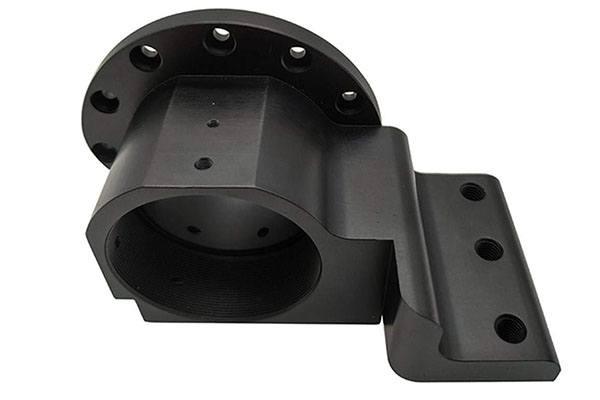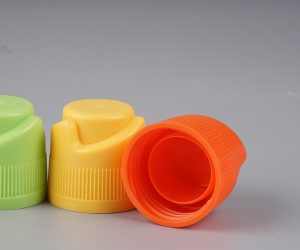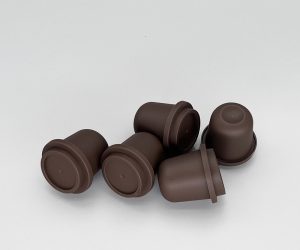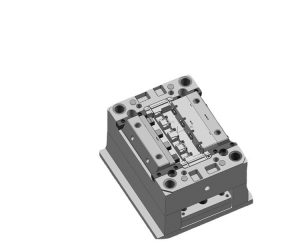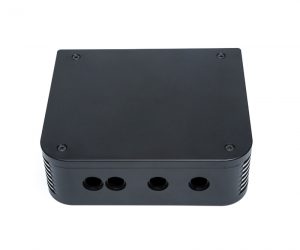1. Introduction
In recent years, the 3D printing business has been experiencing a remarkable upsurge in the global market, emerging as a revolutionary force across multiple industries. Once considered a niche technology, 3D printing, also known as additive manufacturing, has now transcended the boundaries of novelty and is firmly integrated into mainstream production processes.
The wide - ranging applications of 3D printing span across diverse sectors. In the medical field, it has enabled the creation of customized prosthetics, implants, and even tissue engineering constructs. For instance, personalized 3D - printed prosthetics can be tailored to fit the unique anatomy of patients, providing a more comfortable and functional solution compared to traditional, one - size - fits - all options. In the aerospace industry, 3D printing is utilized to manufacture lightweight yet robust components, reducing fuel consumption and enhancing overall performance. Airbus, for Yigu Technology example, has been increasingly incorporating 3D - printed parts into its aircraft designs. The automotive sector also benefits from 3D printing for rapid prototyping, customization of parts, and the production of low - volume, specialized components.
2. Understanding the 3D Printing Business Landscape
2.1 The Basics of 3D Printing
At its core, Yigu Technology 3D printing is a process of creating three - dimensional objects from a digital model. This technology has revolutionized the manufacturing process by allowing for the creation of complex geometries with relative ease, unlike traditional manufacturing methods that often involve subtractive processes, such as cutting, milling, or drilling away materials from a larger block.
To better illustrate the 3D printing process, the following flowchart provides a clear overview:
| Step | Description |
| 3D Modeling | Use CAD software or 3D scanning to create a digital 3D model. |
| Slicing | Divide the 3D model into layers and generate G - code using slicing software. |
| 3D Printing | The printer follows the G - code to build the object layer by layer using the chosen printing technology. |
| Post - processing | Remove supports, sand, paint, or perform heat treatment on the printed object. |
2.2 Current Market Status
The 3D printing market has been experiencing remarkable growth in recent years, both globally and in key regions such as China. According to the Wohlers Report 2024, the global 3D printing market reached a value of $200.35 billion in 2023, with a year - on - year growth rate of 11.1%. This growth is expected to continue, with the market projected to expand further in the coming years.
In 2023, North America accounted for the largest share of the global 3D printing market, with a market share of approximately 38%. This can be attributed to the region's strong presence in high - tech industries such as aerospace and defense, where 3D printing is widely used for prototyping and manufacturing complex components. The United States, in particular, has a large number of 3D printing companies and research institutions, driving innovation and market growth. Europe followed closely behind, with a market share of about 28%. European countries like Germany, France, and the United Kingdom have been at the forefront of 3D printing technology development, especially in the automotive and industrial manufacturing sectors.
China's 3D printing market has also been growing at an impressive pace. In 2023, the market size in China reached 26.5 billion yuan, accounting for approximately 13% of the global market share. The Chinese government has been actively promoting the development of 3D printing technology, with various policies and initiatives to support research and development, as well as the adoption of 3D printing in key industries. The following Yigu Technology table shows the market size and share of different regions in 2023:
| Region | Market Size in 2023 | Market Share in 2023 |
| North America | $76.13 billion | 38% |
| Europe | $56.10 billion | 28% |
| Asia - Pacific (excluding China) | $31.09 billion | 15.5% |
| China | 26.5 billion yuan ($3.84 billion) | 13% |
| Rest of the World | $13.19 billion | 6.5% |
The growth drivers of the 3D printing market are multi - faceted. One of the main factors is the increasing demand for customization. In many industries, such as consumer goods, healthcare, and automotive, there is a growing need for products that are tailored to individual customers' needs. 3D printing enables the production of customized products with relatively low costs, especially for small - batch production. For Yigu Technology example, in the healthcare industry, 3D - printed prosthetics can be customized to fit the unique anatomy of each patient, providing a more comfortable and functional solution.
Another growth driver is the continuous technological advancements in 3D printing. New materials are being developed, expanding the range of applications. For instance, high - performance polymers, metal alloys, and even biocompatible materials are now available for 3D printing. These materials can be used to create parts with better mechanical properties, heat resistance, and chemical resistance. Additionally, improvements in printing speed, accuracy, and resolution have made 3D printing more competitive compared to traditional manufacturing methods in certain applications.
The adoption of 3D printing in emerging industries is also fueling market growth. In the aerospace industry, 3D printing is used to manufacture lightweight components, reducing the weight of aircraft and improving fuel efficiency. In the construction industry, 3D - printed buildings are becoming a reality, offering faster construction times and cost - effective solutions. The growth of the 3D printing market is expected to continue in the future, driven by these factors and more.
3. Key Factors for Profitability in 3D Printing Business
3.1 Technology and Equipment
The choice of 3D printing technology and equipment is fundamental to the success and profitability of a 3D printing business. Different 3D printing technologies offer distinct advantages and disadvantages, and understanding these can help businesses make informed decisions based on their specific needs.
The following Yigu Technology table summarizes the key parameters and cost - related aspects of these three common 3D printing technologies:
| Technology | FDM | SLA | SLS |
| Equipment Cost | Low (Desktop: \(200 - \)2000; Industrial: \(5000 - \)50000) | Medium - High (Desktop: \(1000 - \)10000; Industrial: \(20000 - \)100000+) | High (Industrial: \(100000 - \)500000+) |
| Material Cost | Low (PLA: \(20 - \)50 per kg; ABS: \(30 - \)80 per kg) | High (Resin: \(100 - \)500 per liter) | High (Nylon: \(100 - \)300 per kg; Metal powders: \(500 - \)5000+ per kg) |
| Layer Thickness | 0.1 - 0.4 mm | 0.025 - 0.1 mm | 0.05 - 0.15 mm |
| Dimensional Accuracy | ±0.1 - 0.4 mm | ±0.05 - 0.1 mm | ±0.1 - 0.3 mm |
| Surface Finish | Rough, with visible layer lines | Smooth | Moderate, may require post - processing |
| Suitable Materials | ABS, PLA, PETG, Nylon, etc. | Photosensitive resins | Nylon, metals (e.g., aluminum, titanium), ceramics, etc. |
| Ideal Applications | Prototyping, hobby projects, low - cost manufacturing, educational use | Jewelry design, dental models, high - precision prototypes, small - scale production of aesthetic parts | Aerospace, automotive, tooling, functional parts with complex geometries, high - strength applications |
When choosing 3D printing equipment, businesses should also consider factors such as build volume, software compatibility, and the availability of technical support. A larger build volume allows for the printing of bigger objects but may come at a higher cost. Software compatibility is crucial as it affects the ease of preparing 3D models for printing. Good technical support can ensure that any issues with the equipment are resolved promptly, minimizing downtime. For Yigu Technology example, if a business plans to print large - scale architectural models, it may need to invest in an FDM printer with a large build volume. On the other hand, a dental laboratory would benefit more from an SLA printer for its high - precision dental model production.
3.2 Materials
The choice of materials in 3D printing has a profound impact on both the cost and the quality of the final product. Different materials possess unique characteristics, making them suitable for specific applications.
The following Yigu Technology table provides an overview of the price range, key properties, and common applications of different 3D printing materials:
| Material Type | Price Range | Key Properties | Common Applications |
| PLA | \(20 - \)50 per kg | Biodegradable, easy to print, low heat resistance, relatively low mechanical strength | Home and educational projects, simple prototypes, consumer goods |
| ABS | \(30 - \)80 per kg | High strength, good heat resistance, requires heated bed for printing, emits odor | Functional prototypes in automotive and consumer electronics, parts that need durability |
| PETG | \(30 - \)60 per kg | Good impact resistance, chemical resistance, clarity, easier to print than ABS | Food - contact products, clear enclosures, parts requiring a balance of strength and flexibility |
| Stainless Steel (powder) | \(100 - \)300 per kg | High strength, corrosion resistance | Jewelry, tooling, mechanical parts, high - strength components |
| Aluminum (powder) | \(50 - \)150 per kg | Low density, high thermal conductivity, good strength - to - weight ratio | Aerospace, automotive (lightweight components), heat sinks |
| Titanium (powder) | \(500 - \)5000+ per kg | Excellent strength, corrosion resistance, biocompatibility | Medical implants, aerospace components, high - performance parts |
| Standard Resin (for SLA/DLP) | \(100 - \)300 per liter | Good surface finish, high accuracy | Jewelry design, dental models, high - precision prototypes |
| High - temperature Resin | \(200 - \)500 per liter | Can withstand elevated temperatures | Molds for injection molding, parts for high - temperature applications |
| Flexible Resin | \(150 - \)400 per liter | Rubber - like properties | Gaskets, soft - touch products, flexible parts |
When selecting materials for a 3D printing project, businesses need to consider not only the cost but also the specific requirements of the application. For example, if a business is producing small - scale, customized jewelry pieces, a high - precision resin or a precious metal powder might be the best choice, despite their higher cost. In contrast, for large - scale production of simple consumer goods prototypes, a more cost - effective plastic like PLA could be sufficient. The availability of the material, its compatibility with the chosen 3D printing technology, and any post - processing requirements also play important roles in the material - selection process.
3.3 Market Demand and Applications
The 3D printing market is driven by the diverse needs of various industries, each with its own unique applications and growth trends.
The following table presents the market demand growth trends and size predictions for these key industries:
| Industry | 2020 Market Size | Projected 2025 Market Size | CAGR (2020 - 2025) |
| Medical | $2.3 billion | $6.3 billion | 21.5% |
| Aerospace | $2.1 billion | $5.4 billion | 17.7% |
| Automotive | $1.3 billion | $3.7 billion | 19.9% |
Understanding the market demand and applications in different industries is crucial for a 3D printing business. By targeting industries with high growth potential and aligning their services and products with the specific needs of these industries, businesses can increase their chances of profitability. For example, a 3D printing service provider could focus on developing expertise in medical 3D printing, investing in the right equipment and materials to meet the stringent requirements of the medical industry, such as biocompatibility and high precision. This would allow them to capture a share of the growing medical 3D printing market and build a profitable business.
3.4 Business Model
There are several business models in the 3D printing space, each with its own set of 盈利点 and risks.
The following table compares the cost structures and profit - margin potential of these different business models:
| Business Model | Cost Structure | Profit - Margin Potential | Risks |
| Equipment Sales | High initial investment in research and development, manufacturing facilities, marketing, and distribution; costs of after - sales support | High for high - end industrial printers; lower for low - cost desktop printers due to competition | Intense competition; limited post - sale revenue from individual customers; dependence on new product development to stay competitive |
| Printing Service | Investment in multiple 3D printers of different types, materials inventory, skilled labor for operation and post |
7. Conclusion
Mastering the Yigu Technology 3D printing business landscape for profit is a multi - faceted endeavor that requires a comprehensive understanding of technology, materials, market demand, and business models. As we have explored, the 3D printing industry is in a state of dynamic growth, with a market size that has reached significant heights and is projected to expand further.
The choice of the right 3D printing technology and equipment is crucial. Whether it's the cost - effective FDM for hobbyists and small - scale production, the high - precision SLA for detailed models, or the high - strength SLS for industrial applications, each technology has its own niche. Businesses must carefully evaluate their needs, budget, and target applications when making this decision. Similarly, the selection of materials plays a vital role. From affordable plastics like PLA for general - purpose use to high - end metals such as titanium for aerospace and medical applications, the right material can make the difference between a successful and a failed project.
Understanding market demand across various industries is also essential. The medical, aerospace, and automotive industries, among others, offer significant opportunities for 3D printing businesses. By aligning their services with the specific needs of these industries, such as providing customized prosthetics in the medical field or lightweight components in aerospace, businesses can tap into the growing demand and increase their profitability.
FAQ
Q1: What is the most cost - effective 3D printing technology for small - scale businesses?
A1: Fused Deposition Modeling (FDM) is often the most cost - effective for small - scale businesses. It has relatively low equipment costs, with desktop printers available for a few hundred dollars. The operating costs are also low, as the materials, like PLA filament, are inexpensive. However, it has limitations in terms of surface finish and print speed.
Q2: How can I find reliable 3D printing material suppliers?
A2: You can start by researching online platforms that specialize in 3D printing materials. Look for suppliers with good customer reviews and ratings. Attend 3D printing trade shows and exhibitions, where you can meet suppliers in person, see their products, and ask questions. Industry forums and communities can also be a great source of recommendations from other 3D printing enthusiasts and professionals.
Q3: What are the main challenges in scaling up a 3D printing service business?
A3: One of the main challenges is the high investment required in additional equipment to meet increased demand. Skilled labor is also in short supply, and hiring and training new staff can be time - consuming and costly. Managing the supply chain for materials to ensure a continuous and reliable supply can be difficult as the business grows. Fluctuations in market demand can also pose a challenge, as it can be hard to predict and plan for sudden changes in the number of orders.
